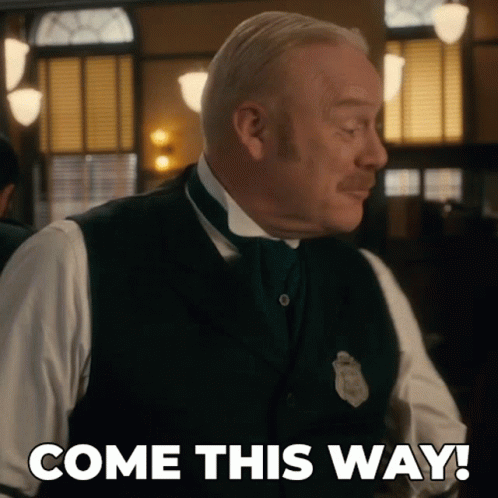How Kendall Cherry generates $20-$50k months from just 572 email subscribers
Succeeding as a freelance copywriter is not just about your skill. Sure, writing good copy helps, but that's given. Yet, I know many good copywriters who struggle to create a consistent income as freelancers.
If that's a problem you're facing, you're in for a treat. Today you'll discover how copywriter Kendall Cherry from The Candid Collective generates between $20 and $50k (that's $200-$500k yearly) from her 572 email subscribers (data from August 2024).

And she achieved all of that without:
- sending complicated cold outreach campaigns
- selling digital products or courses and
- masterminds

But first: context, facts and other important details of Kendall's success
Whenever I hear similar success stories, the context of the success is always camouflaged. I hate that. I believe the context in which people achieve success is crucial.
Here's Kendall's context:
- Written copy for Contrarian Thinking (Codie Sanchez), Appsumo (Noah Kagan), and ConvertKit among others.
- The Candid Collective is her first business. Today Kendall primarily writes LinkedIn and email copy.
- Used to work in communications before becoming a copywriter at a Fortune 100 company.
- Master's Degree in Public Relations.
- Writing copy for more than five years.
There's more, but the purpose of the above bullets is simple: this is not an overnight success. Kendall's revenue is the accumulation of consistent hard work. Plus, she is a damn good copywriter.
You can subscribe to my newsletter and receive this and similar advice daily in your inbox.
Below are four questions I asked Kendall.
You'll find her responses refreshing.
1) What is one skill (or process) that sets you apart from everyone else in your field?
You might surprised, but Kendall doesn't believe copywriting is what sets her apart from the rest. Here's what she revealed:
"I have a very open, hands-off approach when it comes to B2B sales that’s fairly progressive in the online business industry. Some might call it lazy. I call it laissez-faire. Basically, I operate and sell from an abundance mindset with the belief that 1) MILLIONS of brands and businesses need what I do and 2) it’s more important for me to find MY kind of people than it is to just write for anyone—because I’m not for everyone."
I highlighted three spots in her response. Why?
Those three spots capture what I believe is Kendall's superpower: killer business acumen. As a result, her entire positioning is a magnet for her dream clients. And it's all supported by great marketing.
Here's how she explains it.
"What I’ve learned is that the clearer I am in my marketing content that’s subliminally selling my services, the more likely that qualified leads and clients end up on my inquiry form and in my inbox. I don’t need to cold DM, hard sell, or push in any way to find and sign clients. Not only that, but selling like this also allows my prospects to sign on to work with me on their timing, not mine."
In other words: her marketing is an extension of her positioning. Today Kendall attracts the right clients for her business and repels the rest.
You can subscribe to my newsletter and receive this and similar advice daily in your inbox.
If you're a copywriter, you can read a guide on how to fix your positioning here and find your dream clients in the next 14 days.
Let's move on to question numero dos.
2) Why is this skill (or process) important, and what has it allowed you to achieve?
Kendall is a rare breed in the marketing universe because her business relies on transparency. She is very open about her pricing, the type of clients she works with, and what they can expect from her.
Here's how she put it.
"I think a lot of digital marketers, content creators, and B2B service providers are afraid to let go and be this “open.” You get so obsessed with the numbers, the cash flow forecasting, the spreadsheets, and the “not enoughness” that this scarcity and lack ends up getting mirrored in the clients you end up working with. After all…you are what you attract.
The other trap that most people don’t realize is that the mental energy you’re expelling on not-so-great clients and their drama could easily equate to at least one—maybe even two or three!—more incredible clients you could be working with. Depending on what you do, that’s at least an extra $2k (or likely much more) per month in lost revenue that you’re leaving on the table.
This isn’t a sexy answer, but setting better boundaries and sales qualifiers is keeping you from earning more and is ALSO likely the reason you’re stuck at a certain income or revenue level."
This reminds me of the "building in public" trend on social platforms today. Kendall takes this great concept to another level by showing her clients why they should (or shouldn't) work with her.
The result is whoever resonates with her messaging is prequalified.

"This is all great and jolly, but how do I replicate this, Robert?
Worry not young padawan because that was the next question I had for Kendall.
3) How does this skill (or process) work, and how can others replicate it successfully?
A common mistake many freelancers and business owners make with their marketing is that they want to serve everyone. Even those who have figured out their ideal avatar work with clients they'd rather avoid.
Kendall does the opposite and has built her business around her values. The result?
Her clients are prequalified and presold before every purchase.
"Most people go about solving this problem in the exact WRONG way. I’m a huge fan of reverse engineering and I think that instead of creating a list of qualifiers for your ideal client avatar, you should start with the opposite.
You need a list of DISQUALIFIERS a.k.a. your non-negotiables and things your clients and customers absolutely must have in place before you close a sale with them. If they have something on your no-fly list, they’re disqualified as a client. Full stop. My strongest disqualifiers are usually around a prospect’s budget (that’s obvious) and the less obvious…deliverables and scope of work.
If there are certain things that you either don’t enjoy doing or that easily drain you, but you tend to pick them up because you “think it’s easy money,” that’s likely a secret disqualifier."
Kendall doesn't just have an opinion on this. She practices her opinion with every newsletter she sends to her tiny list. Every subscriber can, with a simple click, check her services, packages, and pricing.

A few things to call out from the image above.
- Kendall continues with the transparent approach. Whichever link you click, you'll become more aware of why you should work with Kendall (and not with someone else). Also, creating a waitlist of potential clients opens up all sorts of opportunities for Kendall.
- See the spots section? That creates urgency and scarcity. I have personally seen her availability disappear from one week to the other. In other words, when a client on the fence sees a spot disappear, they will feel left behind.
- All the questionnaires/forms she has her clients go through before working with her automate the onboarding of new clients as much as possible. A side benefit: this also minimizes chances of working with the wrong people... and talking too much with clients (the introvert in me loves this!).
But the magic happens in between – with every word in every document, questionnaire, and page on her website. Ultimately, Kendall has put many 'walls' through which clients jump before hiring her. As a result, she repels anyone who's potentially a bad fit.
Kendall learned the importance of this lesson the same way I did: the hard way (more about it below).
"In my own business, I’ve had a past tendency to take on fractional CMO-level work, project management, or content strategy on top of writing services because I thought I could charge more. If the client requested it, why not pick up a little extra revenue if it’s right there?
What I found is that work outside of my zone of genius like this can often drain me and/or the client isn’t getting the results they could have with someone more of an expert in that area than me.
I’ve learned to double down on my zone of genius—ghostwriting—and only execute that kind of work for my clients. Even crazier? The more I set that energetic boundary, the more the ideal work comes in (and almost always at a more premium rate)."
Kendall's strategy reminds me of what author Greg McKeown calls being an essentialist. Here's how he explains it: “Essentialism is not about how to get more things done; it's about how to get the right things done.”
Put differently, she stopped doing things she didn't feel good about (or didn't excel at) with one service she loves and is a master at.

Everything you read so far is cool and sounds interesting... But where do you put this into practice if you're not yet at Kendall's level?
4)Can you provide a concrete example where this skill (or process) made a significant difference?
Below is a real story Kendall shares from her early copywriting days. I'll share the entire story because it's a masterclass on how to solve a tough client situation.
"I once had a prospect who kept trying to barter with me on price and scope a few years ago and early on in the sales process. I was still sort of new to copywriting and client management. I’d also lost a really big client (and ~25% of my monthly recurring revenue) a few weeks before.
I was totally panicking, kept thinking that “I needed the money,” and was getting a little desperate. Rent was due and I thought I could get away with this one “special” project this one time, just to make ends meet.
Overall, the project cost was a lower $ amount than I would normally accept but it seemed like it would be an easy job, but I was SO wrong. Looking back, I think it was a test to see if I thought I was worth my pricing and what I was charging.
Because I didn’t hold my boundaries or disqualify this client who wasn’t the right fit from the start, their project took me 6X longer than normal.
When I opened up the Google doc to see the client’s revision requests, the entire right-hand side of the page was filled with ambiguous comments and unwarranted requests. The first revision round basically ended up being an entire rewrite. (This happened again on the second revision round BTW).
Not only did it take me forever to get through the revisions process, but the client was so unhappy with their final deliverable that they had the nerve to ask for a partial refund (on a project that was already below my normal rate and took me so much longer than originally scoped to execute). The answer wasn’t no, but hell no.
Luckily, I stuck up for myself this time and the caliber of the work I produced and held firm to my boundaries. I stated my case for denying the partial refund and pointed back to our signed and fully executed contract terms. I also told myself I would never go through that process again."
There are so many lessons in the story above, but I'll highlight just a few before we wrap up:
- Don't make decisions out of fear–it rarely turns out good.
- Know your worth and stick to it.
- Working with dream clients is always easier.
- Set clear boundaries before kicking off a project (revisions, working hours, availability, and more).
- Sign a contract that outlines the deliverables (along with any relevant details).
What Kendall has achieved is amazing. But don't compare yourself to her success. She may have years of experience ahead of you. So, learn from her, plan your next steps, and take action fearlessly.
Remember, growth is often on the edges of your comfort.
You can subscribe to my newsletter and receive this and similar advice daily in your inbox.
Connect with Kendall
If you want to connect with Kendall, you can do so on LinkedIn. You should also subscribe to the email newsletter Wallflower Fridays. I read every email Kendall sends to her list. This is what I had to say about it:

Member discussion